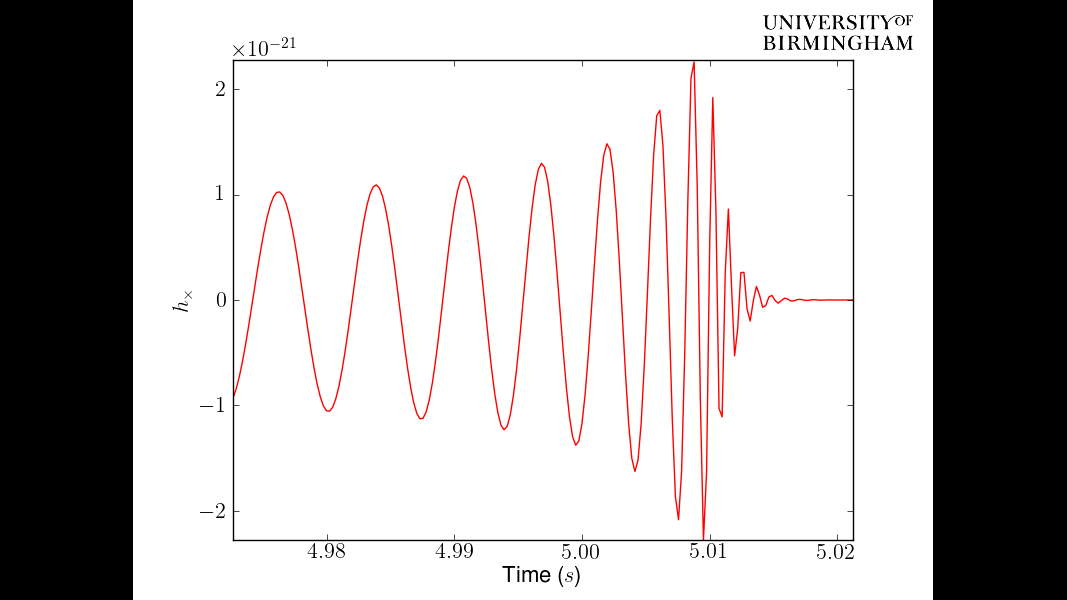What are we looking for?
Chirp Signals from Compact Binary Coalescence
The type of Gravitational Wave signal that we expect to find depends on the source of the Gravitational Wave. One particular type of signal, that has a characteristic form, is that produced by compact binary coalescence. This is where two compact objects, Neutron Stars or Black Holes, orbit each other in a binary system. The objects will lose energy via Gravitational Waves and so their orbital radius shrinks, causing the two objects to spiral inwards and eventually merge.
As the orbital radius shrinks, conservation of angular momentum causes the orbital frequency to increase. The dominant Gravitational Wave frequency is twice the orbital frequency, therefore the frequency of the signal will increase as the coalescence progresses. Denser objects cause stronger signals, so as the separation of the objects decreases the Gravitational Wave amplitude increases.
The Gravitational Wave frequency happens to be in the range of human hearing meaning we can play the signal as a sound. Below is an example of the chirp signal caused by two Black Holes colliding, each with a mass ten times that of the Sun. You should notice the increasing amplitude and frequency described above.
The exact form and length of the signal we detect depends on the precise parameters of the source. However each compact binary coalescence will have a characteristic “chirp” shape, a signal increasing in amplitude and frequency until merger. The signal will then include some Gravitational Waves from the merger itself and a “ringdown” portion as the excitations in the newly formed Black Hole die down. The last few seconds of such a coalescence could be detected in ground based interferometers.
